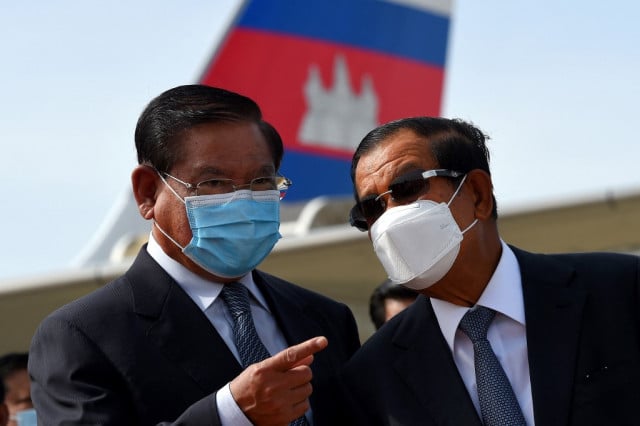UN: More Funding at Sub-National Level Needed to Tackle Climate Change

- By Sem Vanna
- June 7, 2021 3:34 PM
Cambodia spent some $538 million mitigating climate change in 2019, but just 2.1 percent of that was allocated to sub-national authorities, preventing them from implementing effective climate policies
PHNOM PENH--Recently Cambodia has experienced more frequent extreme weather events such as floods, droughts, heatwaves and destructive storms, but tackling these issues requires more funding at the sub-national levels of government, civil society actors have warned.
The United Nations predicts that Asia will be doubly affected by climate change in the next 20 years and while much of Southeast Asia remains vulnerable, Cambodia is reportedly one of the least prepared for the climate crisis.
Dramatic changes have already seen livelihoods lost in farming and fishing, but further disturbances to Cambodia’s ecosystem will jeopardize the nation’s food security. On June 3, NGO Forum launched the Cambodia Citizens Climate Budget and found that local administrations did not receive the funding or resources needed to effectively prepare their jurisdictions for the climate crisis.
While NGO Forum found that the government spent over $538 million on climate change mitigation over the course of 2019, but the majority of this went to ministries rather than sub-national administrations. Just 2.1 percent of the $538 million was allocated to the sub-national level—a drop from the 2.8 percent of 2015’s climate change mitigation budget.
But analysts have warned that without adequate funding, local governments across Cambodia will be ill-prepared to help tackle climate change and introduce policies to help protect lives and livelihoods amid a rapidly changing environment.
Speaking at NGO Forum’s event on June 3, Julien Chevillard—a technical advisor to Cambodia working with the United Nations Development Programme—said that the effects of climate change are becoming worse and worse for Cambodia and this requires greater attention from the government and other stakeholders.
“Most of the funding provided by other organizations and the government focuses more on infrastructure,” said Chevillard, who added that additional funding for the sub-national level is crucial to preventing natural disasters.
“In my view, sub-national administrations are at the forefront of preventing the impacts of the climate crisis because they are very active. Therefore, the government should increase the budget for them to do their work,” he stressed.
Cambodia’s agricultural sector has been one of the most visibly affected economies in the country with crops damaged by extreme weather and shifting annual patterns of rain disrupting the traditional schedule for harvests. The impact on Cambodia’s food production and, subsequently, the economy has already been felt, but is expected to worsen if steps aren’t taken soon.
One of the most recent examples is the heavy rains which led to flash floods in 2020, killing at least 44 people, displacing almost 50,000 more and affecting some 600,000 people across 20 provinces. In addition, it also badly damaged homes, roads, bridges and other infrastructure and destroyed thousands of hectares of rice.
Concerning floods and droughts, Khuon Si, a representative of the Farmers' Network Association in Pursat Province, said her community has faced more difficulties due to the unpredictable changes in weather when it comes to farming.
“Our farmers’ rice crops were destroyed by floods during the rainy season,” she said. “But in the dry season, there is a shortage of drinking water and water for irrigation. So some housewives have to fetch water from wells located far away from their homes during the dry season.”
Si emphasized that farming communities are among the most vulnerable to the climate crisis and said that more funding at the community and provincial level could help them implement solutions relevant to each province.
The Farmers’ Network Association has been building capacity in terms of climate resilience, but most of the association’s projects are funded and supported by NGOs rather than the local authorities.
She went on to explain that the projects helped the association to improve capacity for mitigating the effects of the climate crisis by allowing it to set up a seed storage site so that it can be planted in the dry season. In addition, with support, more water reservoirs have been built while local farmers have also received support in adopted modern farming techniques.
UNDP’s Small Grants Coordinator, Nin Navirak pointed out that the previous climate adaption projects have effectively helped some communities withstand challenges caused by the change in climate.
“[Some] of climate change adaptation projects at the grassroots level have been successful because communities have better water management, better agricultural techniques with a specific degree of knowledge on disaster preparedness,” she said. “They can save a lot of water to use in the dry season.”
While noting that there is—at the community level—a greater understanding of the threat posed by the climate crisis, Navirak suggested that more preparation is needed, but that this requires more support from local governments to build capacity.















